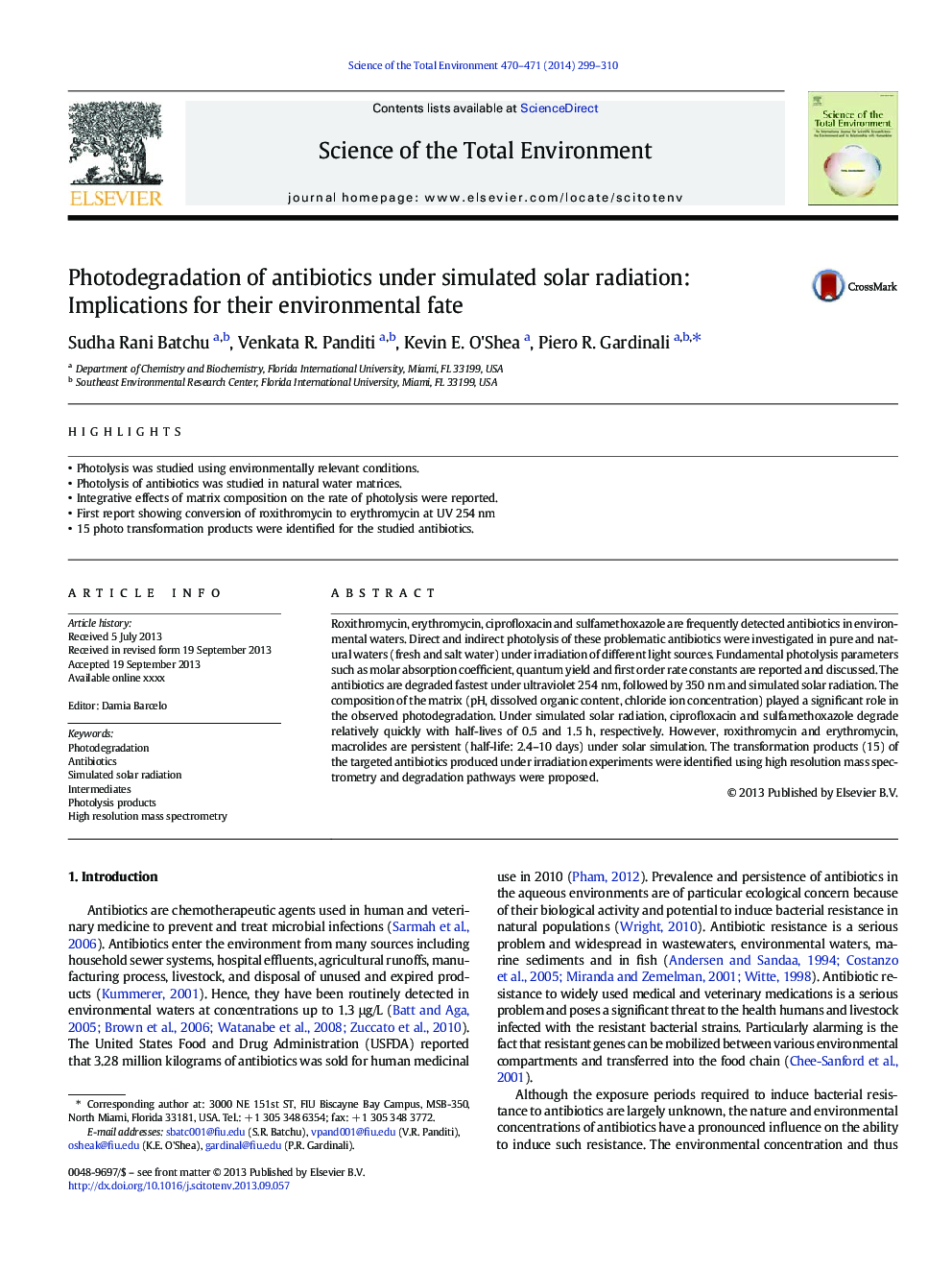| Article ID | Journal | Published Year | Pages | File Type |
|---|---|---|---|---|
| 6331365 | Science of The Total Environment | 2014 | 12 Pages |
Abstract
Roxithromycin, erythromycin, ciprofloxacin and sulfamethoxazole are frequently detected antibiotics in environmental waters. Direct and indirect photolysis of these problematic antibiotics were investigated in pure and natural waters (fresh and salt water) under irradiation of different light sources. Fundamental photolysis parameters such as molar absorption coefficient, quantum yield and first order rate constants are reported and discussed. The antibiotics are degraded fastest under ultraviolet 254Â nm, followed by 350Â nm and simulated solar radiation. The composition of the matrix (pH, dissolved organic content, chloride ion concentration) played a significant role in the observed photodegradation. Under simulated solar radiation, ciprofloxacin and sulfamethoxazole degrade relatively quickly with half-lives of 0.5 and 1.5Â h, respectively. However, roxithromycin and erythromycin, macrolides are persistent (half-life: 2.4-10Â days) under solar simulation. The transformation products (15) of the targeted antibiotics produced under irradiation experiments were identified using high resolution mass spectrometry and degradation pathways were proposed.
Keywords
Related Topics
Life Sciences
Environmental Science
Environmental Chemistry
Authors
Sudha Rani Batchu, Venkata R. Panditi, Kevin E. O'Shea, Piero R. Gardinali,
